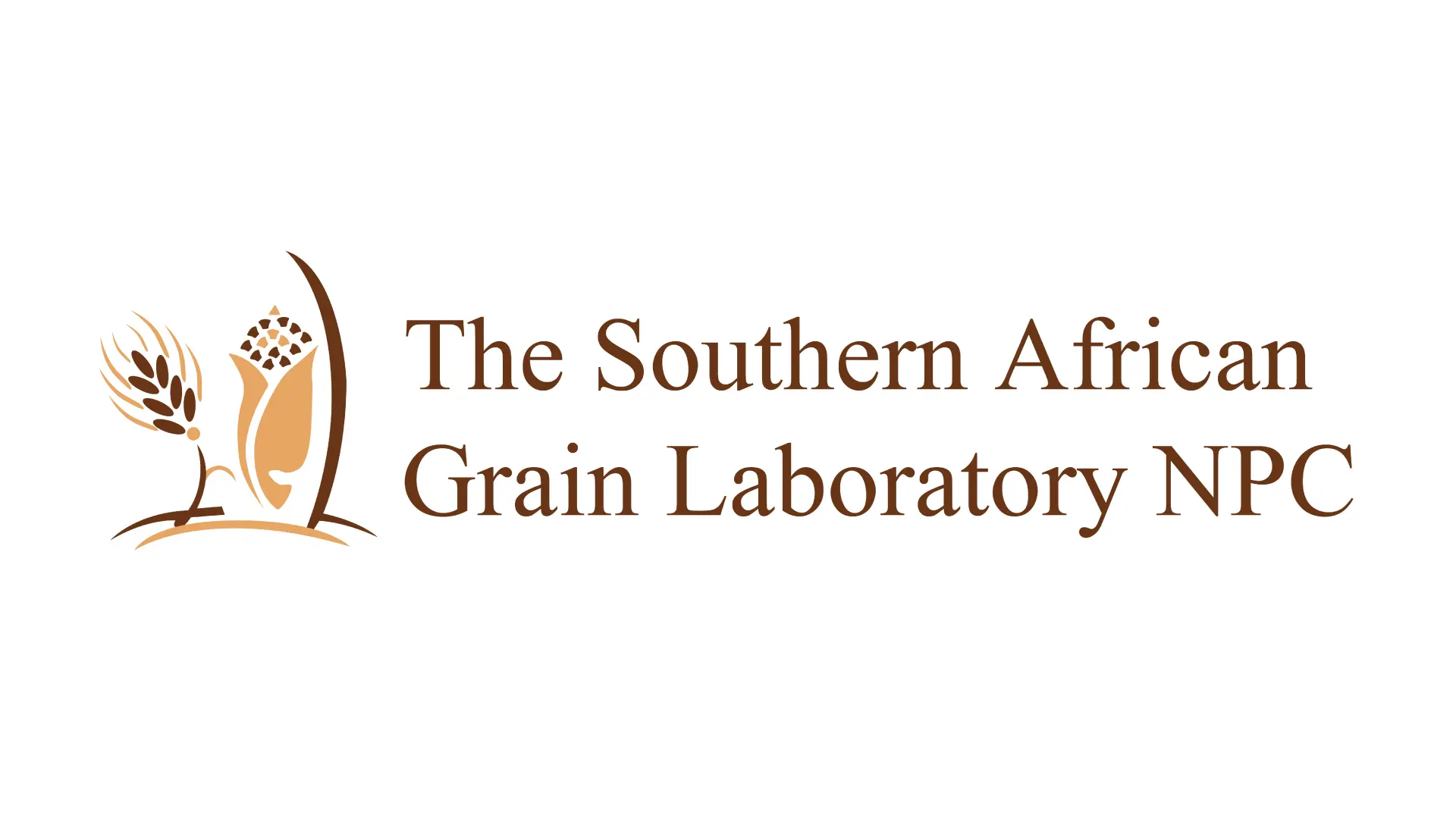The 2018/19 season represented the twenty-first annual wheat crop quality survey. The aim of these surveys is to accumulate commercial wheat crop quality data on a national level to assist industry in decision-making processes. A total of 337 wheat crop samples from 28 different regions throughout the wheat-producing areas of South Africa were graded and analysed.
The average hectoliter mass increased by 0,6 kg/hl to 81,3 kg/hl compared to the previous season. The nine-year average for determinations is 80,7 kg/hl. Eight samples reported values below the 77 kg/hl minimum level for grade B1 wheat. Of these, four samples originated in the Western Cape (Winter rainfall area) and two each in the Free State and Mpumalanga. The regional averages ranged from 79,9 kg/hl in the Western Cape to 83,1 kg/hl in the Irrigation areas. All national, seasonal and regional averages reported are weighted averages.
The whole wheat protein average of 12,1% decreased by 0,5% compared to the previous season. The ten-year national average is 11,9%. The percentage samples with a protein content exceeding 12,0%, decreased from 63,5% in 2017/18 to 53,7% this season. This decrease can be attributed to the severe drought conditions experienced in the Western Cape last season that lead to above-average protein values being observed. During the 2016/17 season, this percentage was 47,8%. The protein content is reported on a 12% moisture basis.
The Summer rainfall and Irrigation areas of the Free State reported the highest whole wheat protein average, namely 13,1%. The Irrigation areas averaged 12,1% and the production regions in the winter rainfall area of the Western Cape 11,8% (Graph 1).
The national weighted average falling number value was 397 seconds, higher than last season’s average as well as the ten-year weighted average value, both 371 seconds. Five of the samples analysed for this survey reported falling number values below 250 seconds and of these only one was below 220 seconds. The samples originated from North West, Mpumalanga and Limpopo. From the results of the 21 surveys, the conclusion can be made that low falling numbers are not a major concern for local wheat producers.
SAGL’s sincere appreciation to the Winter Cereal Trust for financial support of this annual survey, to Agbiz Grain members for providing the crop samples as well as DALRRD (previously DAFF) inspectors at the harbours for providing representative samples of each shipment of imported wheat.

The Konica Minolta CM-5 spectrophotometer used to measure flour colour. The model uses lightness (L*) and two colour values (a* and b*). Generally speaking, a bright white colour flour is more desirable for most products.
The weighted average percentage screenings obtained with a 1,8 mm slotted sieve was 1,49%, slightly lower than the previous season’s 1,51% and also the lowest value of the last six seasons. The Winter rainfall areas reported the highest average percentage, namely 1,80% and the Irrigation areas the lowest of 1,07%. Twenty four (7%) of the 337 samples exceeded the 3% maximum permissible screenings level for grade B3 and of these, nine exceeded the 4% maximum permissible level for grade B4. Most of these samples originated in the Western Cape.
45% of the samples was graded B1, 26% was graded B2, 9% was graded B3, 4% was graded B4, 14% Utility Grade (UT) and 2% Class Other Wheat (COW). The majority of samples (75%) downgraded to Utility Grade was as a result of either the percentage screenings or mainly the percentage other grain and unthreshed ears, individually, or in combination with the combined deviations, exceeding the maximum allowable level for grades B1 to B4. Most of these downgraded samples originated from the Western Cape.
Grade B1 wheat in the Free State province amounted to 68% (51% in the previous season). In the Irrigation areas, 50% (43% in the previous season) of the wheat was graded as B1 and in the Western Cape Province, 37% was graded as B1 (48% in the previous season).
The 1000 kernel mass, reported on a 13% moisture basis, increased from 37,7 g last season to 39,2 g this season. The 2016/17 season’s average was 38,6 g. Averages over production areas varied from 36,1 g in the Free State to 40,2 g in the Irrigation areas.
The mixogram peak time of flour milled on the Quadromat Junior mill averaged 2,8 minutes and compared well with the 2,7 minutes of the previous three seasons. The ten-year average is 2,9 minutes. The mixogram peak time of flour milled on the Bühler laboratory mill was on average 2,6 minutes, equal to the previous three seasons. The extraction on the Bühler MLU 202 mill decreased to 71,3% this season.
Colour is an important parameter of milled wheat since the colour of wheat flour affects the colour of the finished product, like the crumb colour of a loaf of bread. Generally speaking, a bright white colour flour is more desirable for most products. The Konica Minolta CM-5 spectrophotometer measures flour colour by means of the CIE L*a*b* (CIELAB) colour model. The model uses lightness (L*) and two colour values (a* and b*). The colour is measured “as-is”, in other words on a dry sample and does not require a slurry as in the case with other instruments like the Kent-Jones instrument.
Mill settings (how hard the wheat is ground) and the resultant extraction rate, as well as the choice of different mill streams being combined into a specific type of flour, determine the colour of a flour sample. Wheat colour (white vs red), cultivar as well as soil mineral composition are also factors affecting flour colour with regards to lightness and yellowness. Since these samples were all milled on the same laboratory-scale Bühler MLU 202 mill without any setting changes, the variation in colour values observed in Graphs 2 to 4, excludes milling effects.
Wheat Protein
Whole wheat protein is above the ten-year average but decreased compared to the previous season, due to drought conditions.
Looking at the range of results per parameter, the variation in results is less than might have been suspected, given that these are the results of 490 composite samples representing wheat from the entire wheat production area over seven seasons. Keep in mind that the minimum and maximum values are based on a single composite sample’s result in a specific season. The ranges in values for L*, a* and b* respectively are 2,42, 0,58 and 3,44 while the reproducibility of the methodology based on duplicate determinations of identical test material where laboratory, operator and equipment can vary, is 1,268, 0,222 and 0,894 respectively.
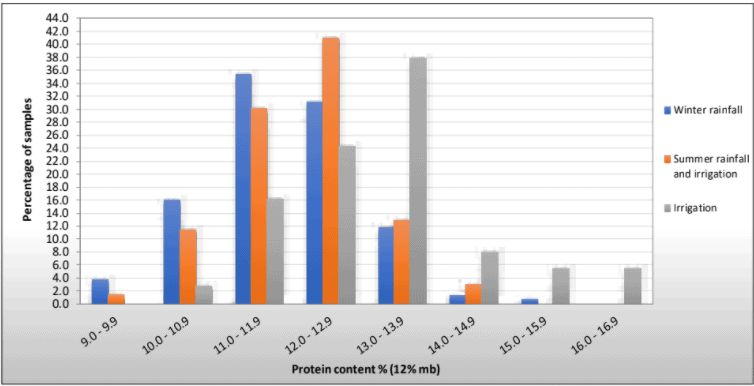
Graph 1: Protein content distribution between the three production areas.
Flour protein content decreased from 11,3% last season to 10,9%. Wet gluten (14% moisture basis) averaged 30,1% and dry gluten, also on a 14% moisture basis, 10,1%. In the previous season, these values averaged 30,7% and 10,4% respectively. The average gluten index value was 94 (93 last season), ranging between 71 and 99. The gluten index provides an indication of the gluten strength (higher being better) and is not influenced by the protein content. A value between 70 and 100 is generally accepted as good quality for pan bread baking purposes. The average ash content was calculated to be 0,60 % on a dry basis (moisture-free basis), equal to the previous season.
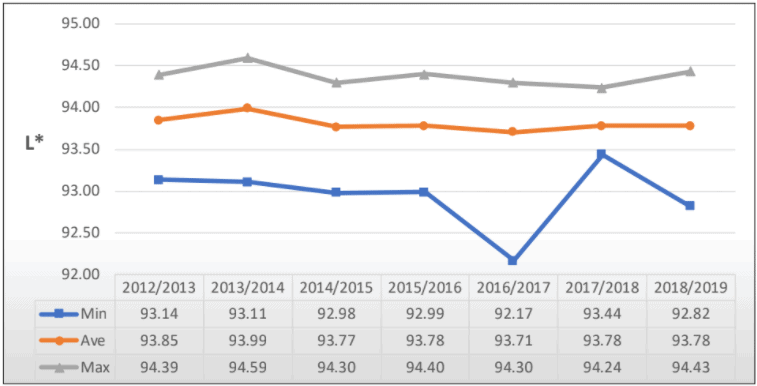
Graph 2: Average L* value per season over seven seasons.
The farinograph analysis resulted in average water absorption of 60,5% (60,3% the previous season) and average development time of 5,0 minutes (5,5 minutes the previous season). The stability value of 7,0 minutes was one minute shorter than the previous average, but still within the acceptable range.
The average alveogram strength was 34,6 cm2 and the average P/L value 0,81 (39,2 cm2 and 0,81 the previous season). The distensibility of the dough as determined by the Alveograph decreased, compared to the previous season, indicating a more elastic dough. The stability value was equal to last season.
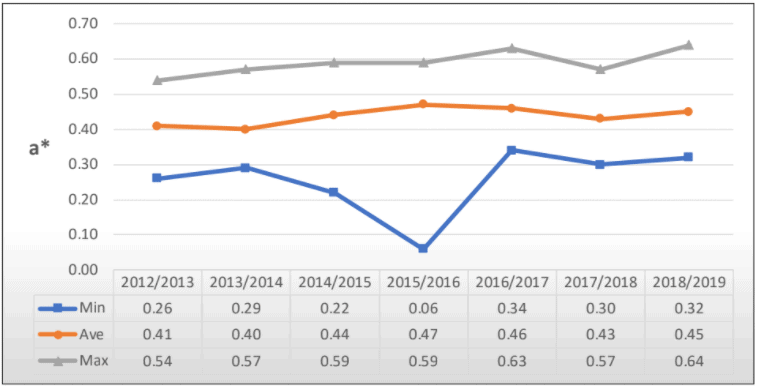
Graph 3: Average a* value per season over seven seasons.
The average extensogram strength was 92 cm2 (106 cm2 previous season), confirming the weaker dough strength trend this season observed with the Alveograph. The maximum height in Brabender Units were also lower than last season (350 BU in 2018/19 and 382 BU in 2017/18). The extensibility values compared well, 191 mm now and 198 mm previously.
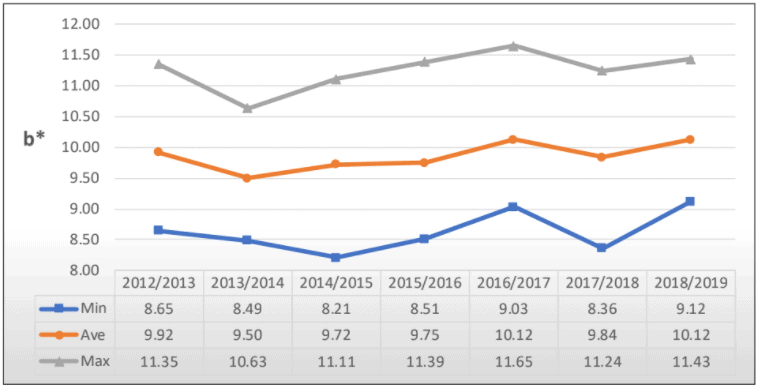
Graph 4: Average b* value per season over seven seasons.
Mycotoxins
Forty wheat samples, randomly selected to represent different regions and grades, were tested by means of an accredited multi-mycotoxin method. Of these, five samples tested positive for deoxynivalenol (DON) residues. The average value of the five positive results was 217 μg/kg (ppb) and the highest value measured 361 μg/kg, which is well below national and international maximum allowable levels.
Amendments to Government Notice No. R. 1145, dated 8 October 2004, published in Government Notice No. 987 of 05 September 2016, specify that: Cereal grains (wheat, maize and barley) intended for further processing, may not contain more than 2 000 μg/kg of Deoxynivalenol. Flour, meal, semolina and flakes derived from wheat, maize or barley, ready for human consumption, may not contain more than 1 000 μg/ kg of Deoxynivalenol.
Mycotoxin risk in grain produced differs from season to season in the same region and also from region to region, because the occurrence and concentration levels of mycotoxins are influenced by climatic factors during the pre-harvest production period. Annual survey results of mycotoxin contamination in local as well as imported wheat and other grains are therefore critically important.


